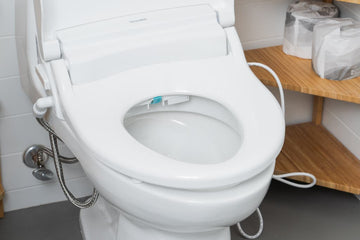As more people and businesses shift towards sustainable living, understanding the intricacies of bidet energy consumption is becoming increasingly important. With environmental issues taking center stage, the popularity of bidets is on the upswing. Yet, the energy usage tied to these devices remains a topic of discussion. In this article, we will examine the energy consumption patterns associated with bidets, highlighting their potential role in fostering an eco-friendly bathroom environment.

Grasping the Basics of Bidets
Before diving into energy consumption, it's important to grasp what a bidet is and how it operates. A bidet is a plumbing fixture intended for washing the genital area after toilet use. Traditional bidets are often standalone units, whereas modern bidets typically come as attachments or integrated into toilet seats. To understand more about how a bidet functions, check out this detailed guide.
Key Factors Affecting Bidet Energy Consumption
Various factors contribute to the energy consumption of a bidet, such as its type, how often its used, and its additional features. Lets take a closer look at these elements:
Type of Bidet
Bidets generally fall into two main categories: non-electric and electric. Non-electric models use water pressure and are energy-free, while electric versions boast features like heated seats, warm water options, and air dryers, all of which add to their overall energy consumption.
Usage Frequency
How often you use the bidet has a significant effect on its energy consumption. In homes where the bidet sees regular use, the cumulative energy use can become considerable. In contrast, infrequent usage results in relatively lower energy consumption.
Additional Features
Modern bidets often come equipped with various features aimed at enhancing user comfort. However, elements like heated seats, adjustable water temperatures, and air dryers can elevate energy usage. Users should strive to find a balance between comfort features and energy efficiency for sustainable operation.
Comparative Analysis: Bidet Energy Consumption vs. Conventional Methods
Even though bidets consume energy, its important to assess this in relation to the environmental footprint of traditional toilet paper use. The manufacturing of toilet paper necessitates considerable amounts of water, energy, and raw materials. By cutting down or entirely removing the reliance on toilet paper, bidets present a more sustainable alternative. For an extensive comparison, check out this environmental impact study.
Ways to Reduce Bidet Energy Consumption
To enhance the energy efficiency of your bidet, consider implementing the following strategies:
Select Energy-Saving Models
When choosing a bidet, prioritize models that emphasize energy efficiency. Seek out features such as energy-saving modes or timers that ensure the bidet functions only when needed.
Minimize Use of Extra Features
While features like heated seats and air dryers provide convenience, they also escalate energy use. Utilize these additional features judiciously to conserve energy.
Conduct Regular Maintenance
Ensure your bidet receives regular upkeep. This includes checking for potential leaks that could lead to unnecessary water and energy waste. Consistent maintenance helps keep your bidet operating effectively.
Conclusion: Embracing Eco-Friendly Bathroom Solutions
Comprehending bidet energy consumption is a critical step toward adopting sustainable bathroom practices. By evaluating aspects such as bidet type, usage frequency, and additional features, users can make informed choices that support their sustainability objectives. For more insights on effective bidet use, you may wish to read this helpful guide.

Frequently Asked Questions
Do electric bidets consume a lot of energy?
Electric bidets primarily consume energy through their enhanced features like heated seats and warm water. However, selecting energy-efficient models and limiting feature use can help decrease overall consumption.
Are bidets more eco-friendly than toilet paper?
Yes, bidets are often considered more environmentally friendly than toilet paper, as they lessen the demand for paper production, which requires substantial water and energy resources.
How can I cut down on my bidet's energy usage?
To minimize energy usage, choose energy-efficient bidet models, use extra features sparingly, and conduct regular maintenance to ensure optimal performance.
This article contains affiliate links. We may earn a commission at no extra cost to you.






